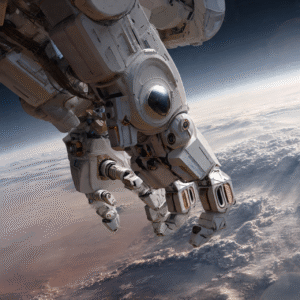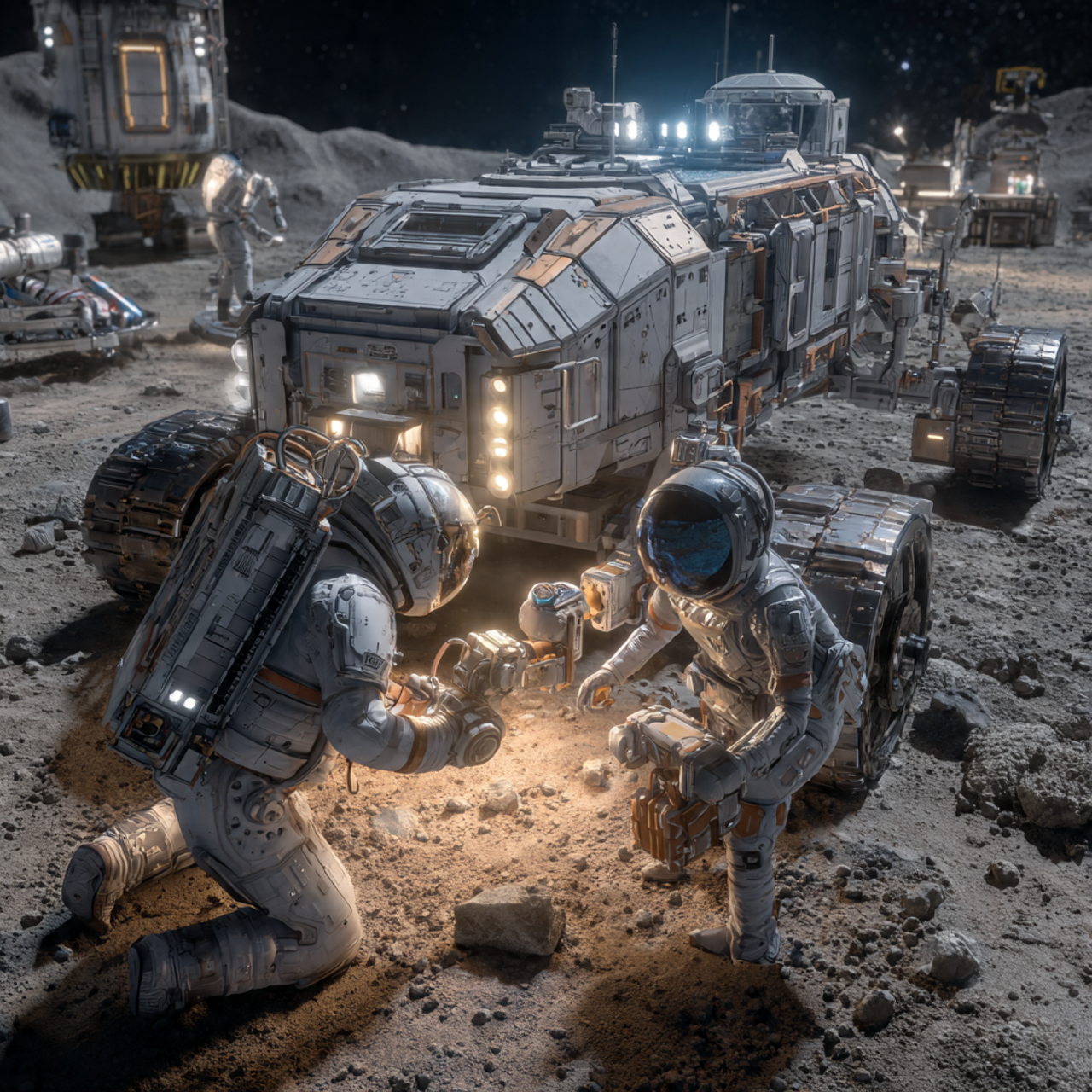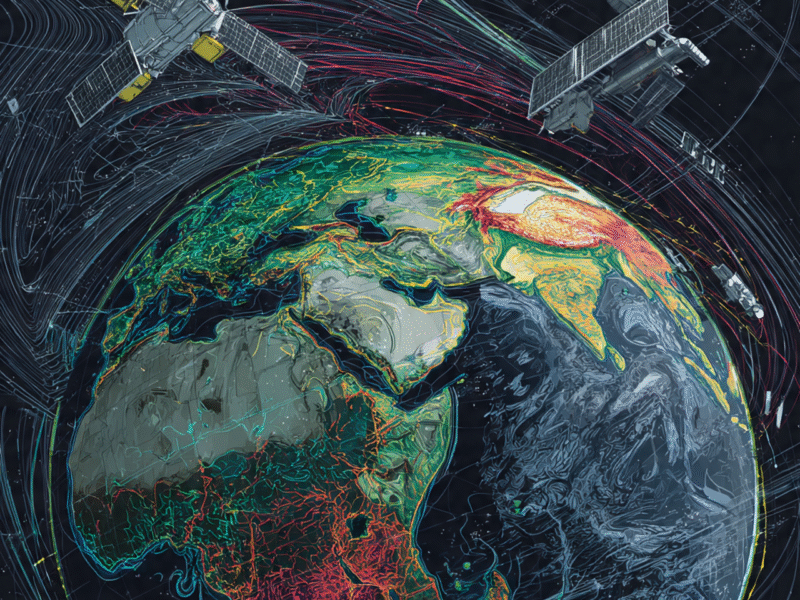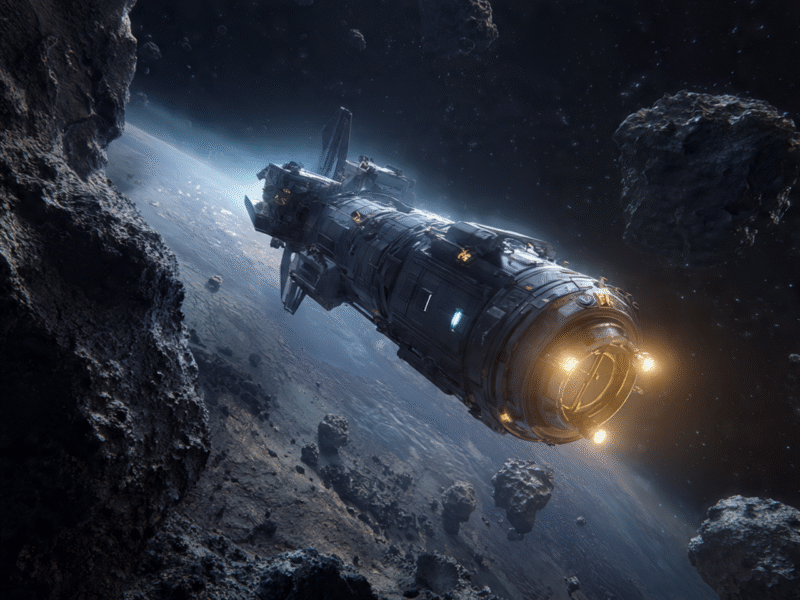Today I am presenting to you a complete, unique and interesting article on space robotics that is being written for the first time in the world.

This article will tell you the complete story of space robotics, explain every aspect of it in detail, and take your understanding to a new level. If you like this content, be sure to let us know, and if you want more details on a particular topic, you can contact us.
🤖 Space robotics: The eyes of humanity that are seeing the mysteries of the universe
When we look at the stars in the night sky, a curiosity arises in our hearts – is there life on any of these stars? Will we ever be able to reach there? These questions have been swirling in the minds of humans for thousands of years. But today, we are looking for answers to these questions, and in this search, space robots have become our greatest assistants. It is no exaggeration that space robotics has changed humanity’s understanding of the universe forever. Imagine that when the first space robot was sent into space in the 1960s, it was just a simple device that could perform a few basic tasks. Today’s space robots are highly complex mechanical entities that can make autonomous decisions, solve complex problems, and accomplish tasks impossible for humans. The Perseverance rover on the surface of Mars is a living example of this, revealing the secrets of the Red Planet to us. These robots are not just machines, but they are the story of humanity’s journey, a reflection of our curiosity, and a testament to our creativity. Every robot we send into space actually carries a part of our hopes and dreams. They see as our eyes, hear as our ears, and feel as our hands. This story of space robotics is not just a story of technology, but it is a story of humanity pushing its limits, of pushing its capabilities to new heights. When we see space robots landing on other planets, we are actually landing there ourselves. When they leave their first mark on a planetary surface, it is our mark. This journey has just begun, and its next chapters are full of surprises for all of us.
🛡️ Astronauts’ Guardians: The Robotic Hands That Save Lives
The space environment is inherently dangerous for humans. We all know that in space there is no air, no water, no suitable temperature, and no gravity that keeps us safe on Earth. But above all, there is another danger that can prove to be the most deadly for astronauts – and that is the unknown and unpredictable nature of the space environment. When an astronaut leaves the space station, he is constantly worried that some small space debris or rock might hit him. This is where space robots play the role of “guardians”. The robotic arm named “Dexter” installed on the International Space Station is a perfect example of this. This robotic arm is much stronger than a human, and it can be entrusted with all the tasks that could be dangerous for astronauts. For example, when a satellite needs repair, Dexter grabs it and brings it closer to the space station, where astronauts can repair it in a safe environment. In the past, astronauts had to do this work by doing spacewalks themselves, which was life-threatening at every moment. Space robots have not only ensured the safety of astronauts, but also allowed them to focus on more important scientific tasks. Now astronauts can control the robots from inside the space station, and perform the dangerous tasks that they previously had to do themselves. These robots are not only the astronauts’ protectors, but they are also their assistants, their companions, and their reliable partners. They lengthen the astronauts’ hands, sharpen their eyesight, and multiply their abilities. When a space robot performs a dangerous task, it is not only saving the life of an astronaut, but it is also making future space missions safe for all of humanity.
🔍 New Doors of Discovery: The Mechanical Feet That Walk on Unknown Lands
The greatest journey in human history is the journey of discovery. We have explored every region of the Earth, understood every continent, and reached the depths of every ocean. But now our journey has gone beyond the boundaries of the Earth and reached the vast expanses of the universe. And on this journey, our greatest companions have become space robots. The Perseverance rover on the surface of Mars is a living example of this. This rover is an autonomous mechanical entity that is revealing the secrets of the red planet to us. When we see the landscapes of Mars through its eyes, we are actually there ourselves. When it collects samples of Martian soil, our hands are actually touching those samples. Space robots have opened new doors of discovery that were previously closed to humans. They have reached places that are still impossible for humans to reach. The Cassini mission discovered methane seas on Saturn’s moon Titan. The Juno mission revealed the secrets of Jupiter’s storms. The New Horizons mission sent the first close-up images of Pluto. All these achievements are in fact due to space robots. Each robotic mission is providing us with new information about the structure of the universe and its origins. These robots are not only our eyes, but they are also our scientists, conducting experiments for us, collecting data, and helping us understand how our universe works. When we see space robots landing on other planets, we are, in fact, entering a new era of human discovery. This journey is still ongoing, and each new mission is deepening our understanding of the universe.
👨🚀 The dance of man and robot: the harmony that is making the impossible possible
Some people think that space robots will replace humans, but the reality is quite the opposite. Together, space robots and humans are creating a harmony that is taking both of their abilities to new heights. This is not a competition, but a beautiful partnership where each brings their own skills. Astronauts bring their creativity, problem-solving skills, and decision-making abilities. Robots bring their strength, durability, and ability to work in dangerous environments. When the two work together, they can accomplish tasks that neither of them could do alone. We can see the best examples of this partnership on the International Space Station. Astronauts control robotic arms, give them instructions, and monitor their work. Robots lift heavy loads, perform dangerous repairs, and keep astronauts safe. This partnership is not limited to the space station, but also continues from Earth. Scientists and engineers on Earth send instructions to space robots, analyze their data, and determine their next steps. This is a global partnership involving thousands of people, and space robots are at the center of this partnership. In the future, when we establish settlements on the Moon and Mars, this partnership will deepen even further. Astronauts and robots will work together to build buildings, establish research centers, and lay the foundation for a new civilization. This partnership is not only advancing space exploration, but it is also teaching us how beings with different abilities can work together to achieve greater goals.
🏗️ Space Architects: The Machine Workers Who Are Building Our Homes on the Moon and Mars
The dream of permanent human settlements on the moon is now getting closer to reality. But the question arises, who will build these settlements? The answer is – space robots. These robots are our space architects, who will be building safe structures for us to live there even before we arrive. The materials needed for the construction of the moon will be available there. The lunar soil, called “regolith”, can be turned into building materials with the help of 3D printers. Space robots will collect this soil, process it, and produce bricks and other building materials from it. These robots can work continuously, they do not need to rest, and they can continue to work even in the harshest environments. They will build dome-like structures on the lunar surface that will protect astronauts from the dangers of radiation and meteorites. They will build underground shelters that will be even safer. They will install solar panels that will provide electricity. All this will be happening while astronauts are still on Earth. When astronauts arrive on the moon, safe habitats will already be ready for them. These robots are not only experts in construction, but they will also be responsible for maintenance. They will repair structures, operate systems, and keep everything in proper condition. These space architects are laying the foundation for the future of humanity, and the day is not far off when we will be living in our own homes on the moon, and all this will be thanks to space robots.
🌾 Space farmers: The mechanical hands that are growing food in space
The biggest challenge for living in space for a long time is food. Bringing food from Earth is extremely expensive and impractical. The solution to this problem is – space agriculture. And this task will also be carried out by space robots. These robots will become space farmers and grow food for us. They will operate hydroponic and aeroponic systems, where plants will be grown without soil. These robots will care for the plants, water them, monitor their growth, and protect them from pests and diseases. They will control the light, humidity, and temperature that the plants need. These robots can work continuously for weeks and months, without tiring, without stopping. They can take care of each plant individually, understand its needs, and care for it accordingly. Even when the astronauts are sleeping or busy with other tasks, these robots will continue to work on the farm. Not only will they produce food, but they will also provide oxygen and absorb carbon dioxide, which will improve the environment of space settlements. This generation of space farming robots will make us independent in space, and help us reduce our dependence on Earth. These robots will not only be growing food for us, but they will also be laying the foundation for a sustainable and self-sufficient future for us.
🏥 Space doctors: The mechanical doctors who are treating millions of miles away
Health is a major concern on long space missions. If an astronaut gets sick or injured, help from Earth cannot be immediately reached. The solution to this problem is space robotic doctors. These robots will act as space doctors, who will take care of the astronauts’ health. These robots will be able to perform daily medical examinations of astronauts, monitor their heart rate, blood pressure, and other vital signs. If an astronaut needs medical attention, these robots will be able to provide immediate assistance. They will be able to do blood tests, treat wounds, and even perform surgery. Doctors sitting on Earth will be able to control these robots, and operate on the astronaut sitting thousands of miles away. This will be a new form of telemedicine, in which robot doctors and human doctors will work together. Space robotic doctors will not only help with treatment, but they will also continuously monitor the health of astronauts. They will be able to warn about any possible disease at an early stage, and take preventive measures. These robots will also be able to prepare pharmaceutical drugs, and provide medicines when needed. This generation of space doctor robots will not only make space missions safer, but it can also be helpful in providing medical services in remote areas on Earth.
🔧 Every Craft Master: The Mechanical Mechanics Who Operate Spacecraft
Spacecraft and satellites require constant maintenance and repair. These machines operate in extremely harsh environments, where they are exposed to radiation, extreme temperatures, and space debris. Space robots have the solution to all these problems. These robots work as space mechanics, who maintain and repair spacecraft. They replace damaged parts, install new equipment, and keep systems in proper working order. We can see a perfect example of this on the International Space Station, where robotic arms are constantly maintaining the station. These robots not only do routine maintenance work, but they also clean the spacecraft, protect them from the sun, and keep them in proper working order. When a new satellite is sent into space, these robots deliver it to the right location, activate it, and test its performance. If a satellite breaks down, these robots can repair it, eliminating the need to call it back to Earth for repairs. These robots are the “life support systems” of spacecraft, keeping them alive and functioning. They are not only taking care of existing spacecraft, but they are also helping to build future spacecraft. Manufacturing and assembling spacecraft parts in space is a new trend, and space robots are playing an important role in this too.
🌍 Earth Guardians: The Mechanical Guardians That Protect Our Planet
The benefits of space robots are not limited to space exploration. These robots are also playing an important role in solving our daily problems on Earth. Space robots often provide the data we need to combat problems such as climate change, natural disasters, and environmental pollution. These robots orbit the Earth and monitor the health of our planet. They monitor deforestation, assess sea level rise, and monitor air pollution levels. When a natural disaster strikes, such as a flood, earthquake, or hurricane, these robots immediately provide images and data of the area, which helps with recovery efforts. These robots not only collect data, but they can also analyze this data, and warn us of upcoming dangers. For example, they can accurately determine the path of a storm, or assess the risk of flooding after an earthquake. These robots are monitoring our planet’s “vital signs,” letting us know how our planet is changing. They are helping us understand how our activities are affecting Earth’s environment, and providing us with the information we need to protect it. This generation of space robots is not only helping us with space exploration, but it is also playing a vital role in protecting our own planet.
🧠 Autonomous intelligence: Machine minds that make their own decisions
The new generation of space robots will be equipped with artificial intelligence (AI). These robots will be able to operate autonomously without being controlled from the ground. They will understand their environment, make decisions, and find solutions to problems. For example, an AI robot walking on the surface of Mars will see an interesting rock and decide for itself that it is worth analyzing it. This autonomy will take space exploration to new heights, because during the time it takes to send a signal from Earth and return (for example, 20 to 40 minutes on Mars), robots will be able to make decisions on their own. These robots will not only be able to make decisions, but they will also be able to learn from their experiences. They will be able to learn from their mistakes, and improve their work. These autonomous robots will be able to perform complex tasks, such as planning on their own, setting goals, and achieving them. They will be able to work together with other robots, and provide information to each other. This autonomy will take space exploration to a new level, where robots will not only be our guides, but they will also be our partners. They will guide us to new discoveries, and expand our knowledge. These robots equipped with artificial intelligence will not only revolutionize space exploration, but they will also help us understand what intelligence is, and how it works.
🌟 The Future of Humanity: The Mechanical Stars That Show Us Light
Space robotics is not only helping us explore space, it is also giving us the opportunity to become better humans. It is teaching us how machines and humans can work together to solve the greatest mysteries of the universe. When we see space robots landing on other planets, we realize how creative, how brave, and how inquisitive our nature is. These robots are symbols of our hopes, the embodiment of our dreams. They remind us that we have no limits, that we can achieve anything, reach any place. The journey of space robotics is actually a reflection of the journey of humanity. It is a journey of our curiosity, a journey of our discovery, a journey of our progress. When we see space robots with successes, we are confident that our future is bright, that our future generations will reach the stars, and understand the mysteries of the universe. These robots are the bright stars of our future, showing us the way, and inspiring us to move forward.


